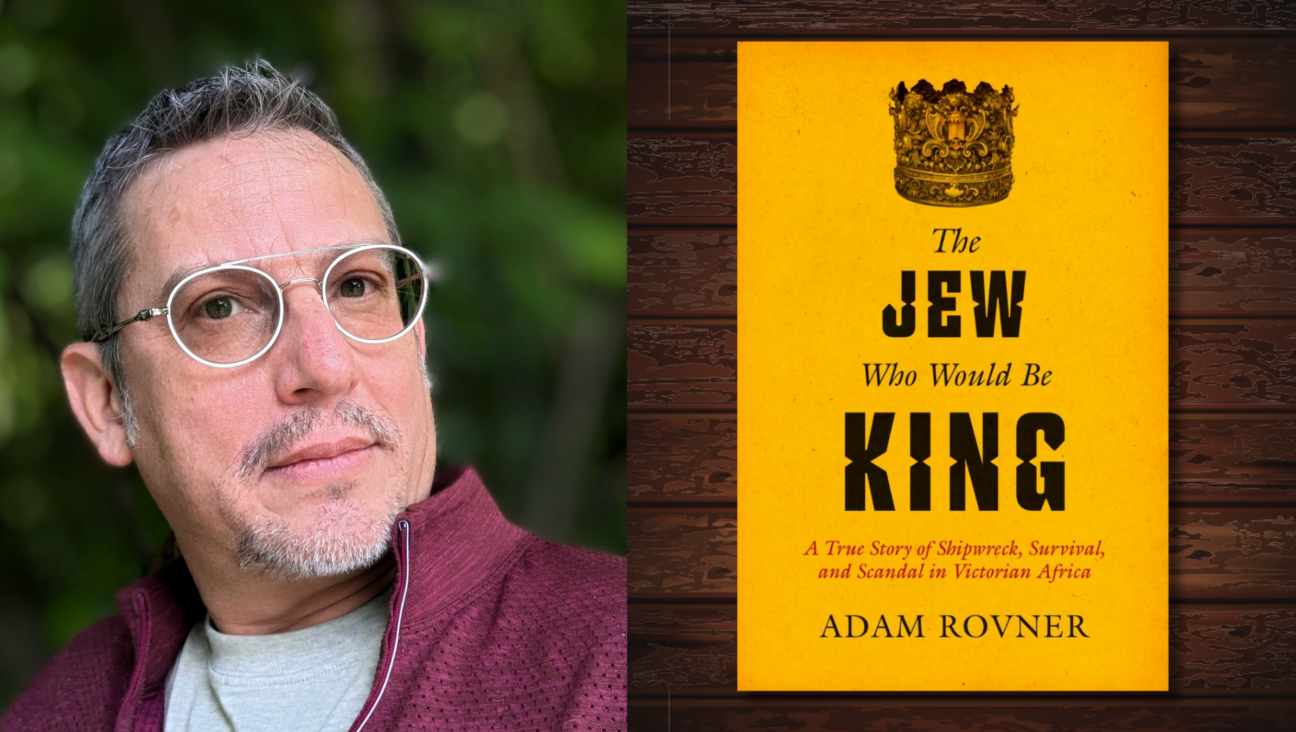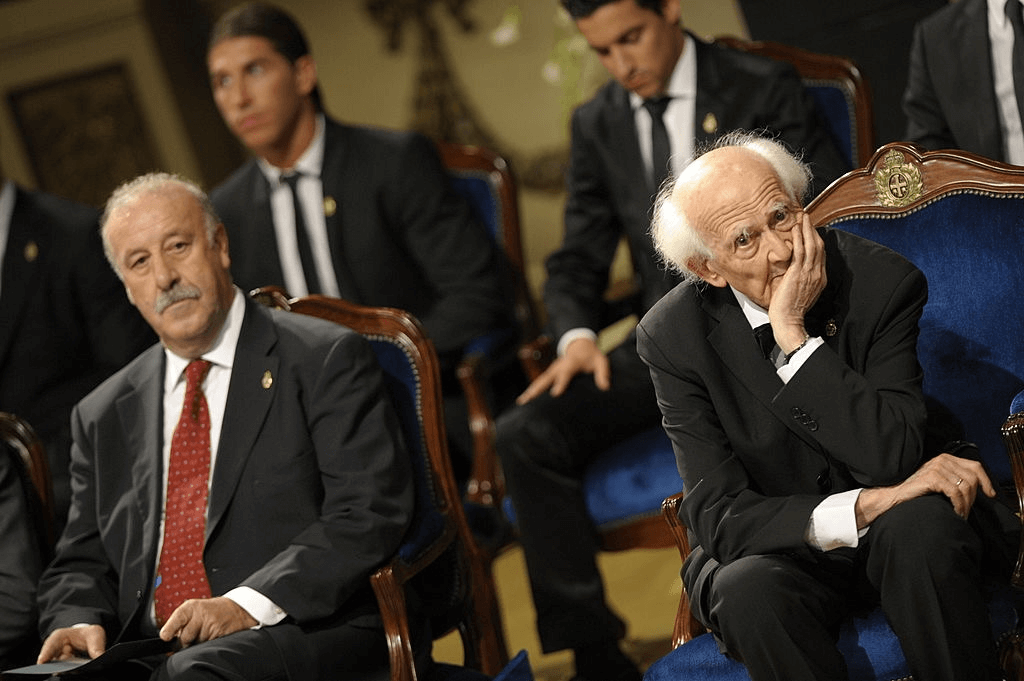Mystery Sells: What the Kabbalah Centre Actually Teaches
The Power of Kabbalah
By Yehuda Berg
(Jodere Group, 2002)
* * *|
The 72 Names of God
By Yehuda Berg
(Kabbalah Centre International, 2003)
* * *|
Mainstream Jews cannot stand the Kabbalah Centre. You can tell by the way they mock it, highlight its every flaw (huge offices! expensive bracelets!) and deride Madonna, Britney Spears, Ashton Kutcher and the other celebrities who seem to have been suckered in by the wealthy shysters who run the place. Madonna — whose recent tour was rife with kabbalistic teaching and art — is particularly high profile, and we all remember her previous antics, her shifting personalities; many wonder whether this isn’t just her latest phase — another Hollywood spiritual fad, like Scientology or EST? (Does anyone even remember EST?) But for most Jews, the Kabbalah Centre is a little bit worse, because the source of this silliness is something Jewish in origin, and something that we are either a little afraid of, a little ashamed of, or both.
One of the first objections I hear in the Jewish community is that kabbalah is meant to be secret wisdom. Surely, some say, it’s for Jews only, and a surprising number of people know that, according to some traditions, Kabbalah should only be studied once you’ve reached the age of 40, and once you’ve memorized the Talmud. (One should also add once you’re male, and married with kids.)
In fact, these prerequisites do exist, but they never were followed universally and were created by rabbis opposed to the kabbalah, largely in the wake of the Sabbatean heresy of the 17th century, whose proponents used kabbalistic ideas to prove that Sabbetai Tzvi was the messiah. In response to the great heresy, the doors were shut. Yet they never stayed closed: Kabbalah is much more part of ordinary life in the Sephardic community, and within 100 years of Sabbetai Tzvi, they were reopened in Europe by the Hasidic movement.
So it isn’t really a matter of restrictions. Yet, having spent several years among teachers who use Kabbalah in their spiritual work, and having good familiarity with the concepts of Jewish mysticism, I was curious those how the Kabbalah Centre stacked up. I take for granted that there is something wrong with a spiritual organization in which the leaders live very richly and which charges large amounts of money for some of its materials. But what I was more interested in is how Kabbalah is used within that context — basically, what are they teaching?
The Kabbalah Centre’s books and catalogs are fearless, blunt and outrageous, peddling the over-the-top rhetoric of a motivational speaker (“This book will change your life!”). In contrast, books from the Jewish spiritual community are always much more tentative. I think the reason for this is that most spiritual seekers have heard the big promises and have been disappointed by them. Berg makes them.
The Baal Shem Tov said: “There is nothing so whole as a broken heart,” because the broken heart is open to be filled by God. But Berg seems to think otherwise, assuring readers that they can indeed have a “life filled with unending joy, purpose and contentment,” and asking us to “suppose there was [sic] a hidden wisdom that revealed and unified the spiritual and physical laws of life.…” And we’re off.
How do we get there? “The Power of Kabbalah” explains: The essence of human life is desire. We desire many things — money, sex, success — but ultimately, our desire is for the Light. (Kabbalah Centre books carefully minimize their use of the “G” word, but that’s roughly what they, and Madonna, mean when they talk about “Light” or “Ray of Light.”)
Ironically, the Light is everywhere, but we’re too blind to see it.
Kabbalah Centre books rarely quote sources other than their own, but Rabbi Nachman of Bratzlav said it far more eloquently than they do: “Woe to us! The world is full of light and mysteries both wonderful and awesome, but our little hand shades our eyes and prevents them from seeing.” The task, then, is to access the Light — what Berg calls “the 99% world,” in contrast to the 1% world of our illusory perceptions. In true kabbalistic fashion, this is done not by ceasing to desire (Buddhism) or bathing in Divine Love (Sufism) but, in Berg’s words, “reassembling the puzzle of Creation.” For Berg, we all touch the 99% world “during those rare moments of clarity, rapture, mystical insight, expanded consciousness, epiphany, or tuning in to pick the winning numbers in the lottery.” Michael Jordan touched it, Berg says, when he won the NCAA National Championship. But the key is that Kabbalah teach us to control that access. It is, first and foremost, technology.
The key, he says, is to be proactive, not reactive. When you are confronted with an obstacle, notice that the real obstacle is not what happened (that jerk who cut you off in the street), but your response to what happened (anger, fear, pain). Berg associates that reactive mind with the evil inclination, Satan himself. What’s needed is not healing or surrender, but “Resistance” — mastery of the reactive mind.
Is this really new? Nope. “Who is a hero? He who masters his Inclination,” the Ethics of the Fathers say. But then, they didn’t have glossy catalogs.
Nor, to give the Kabbalah Centre due credit, did they have a “technological” approach to self-mastery. One of the Kabbalah Centre’ innovations is an unprecedented (to my knowledge) adaptation of the 72-letter name of God — actually, 72 letter-triads — derived from three verses in the book of Exodus. Traditional kabbalistic literature teaches many magical and mystical properties of this name. What “The Power of Kabbalah” and the high-design, high-concept “The 72 Names of God” does is use the triads as “technology” for different situations. For example, the letters that Britney Spears has tattooed on her neck are about quashing the selfish ego; others help find your soul mate, or protect you from misfortune. It’s hard to evaluate the authenticity of these practices. I am not familiar with any other source that refers to each triad as a distinct “Name.” Nor does Berg ever list his sources. In fact, according to kabbalists and scholars I consulted in my research, the Bergs appear to have made up a lot of this stuff .
This is occult magic, in a sense, but in fact all the triads are really meant to do is focus consciousness. You focus on the letters, draw “power” from them, and gain control of the situation. You don’t need to believe anything; as Berg says, try it yourself. I did, and it works. Of course, it also would work if you repeated a mantra, or counted rosary beads. All the “technology for the soul” really does is help you focus.
Pause, breathe, get out of the insanity for a moment, and you can remember before Whom you stand.
Of course, I thought that was what tzitzit, kippot and regular prayer were supposed to help you do, too. At the end of the day, the strangest, weirdest thing about the Kabbalah Centre’s teachings is that, “technology” talk and over-the-top salesmanship aside, there isn’t really very much new here. Yet the center is extremely successful, in a way that should make the institutional Jewish community green with envy.
Sure, part of its success is due to aggressive marketing, and to the willingness to reach out to marginal Jews, and non-Jews, with a teaching that “isn’t about religion” but is a “universal wisdom.” Jesus did that, too. But spiritual bells and whistles also matter. The fact is that mysteries are powerful. People who buy these books want to hear that we are only in touch with 1% of reality. I remember meeting someone on an airplane, reading “The Da Vinci Code,” who was overjoyed to have met a kabbalah teacher, someone else for whom “things are not as they seem.” Consumers of these products don’t want to hear about the Holocaust, kosher meat or the State of Israel. They want to hear that there is an answer, a secret, a mystery.
The uses to which the Kabbalah Centre puts this power are sometimes dubious —Kabbalistic feng shui; scanning the mere letters of the Zohar, even if you can’t read them; lots of red bracelets. Other times, they are very close to ordinary Jewish ethics: master your inclination, be less angry, be generous. Yes, it’s superficial, but it is any more superficial than the desperate attempts of the institutional community to “market” or “sell” Judaism to a new generation? And at least the Kabbalah Centre is selling superficial spirituality; sometimes I feel like the mainstream Jewish community is just pushing bagels.
The question I have, as a Kabbalah teacher myself, is that of skillfulness. Is it skillful to promise everlasting Light with all the trimmings? It certainly does work in the short term, and I don’t want to begrudge the Kabbalah Centre its success. But as a practical matter, I have my doubts that turning Kabbalah into a spiritual panacea is the best way to spread its worthy messages, especially when doing so requires a great deal of dissembling regarding what the Kabbalah is, how it came to be and what its central teachings really are. I think disillusion will set in, as it has with so many other systems that promise all the answers and conceal their historical origins.
It’s too easy and too exotic. But there is something the rest of us can learn from the Kabbalah Centre. I’m just not sure whether it’s about how to market a religion, or what happens when a religion is marketed.
Jay Michaelson (www.metatronics.net) will be teaching Kabbalah this fall at the Sol Goldman 14th Street Y.
The Forward is free to read, but it isn’t free to produce

I hope you appreciated this article. Before you go, I’d like to ask you to please support the Forward.
Now more than ever, American Jews need independent news they can trust, with reporting driven by truth, not ideology. We serve you, not any ideological agenda.
At a time when other newsrooms are closing or cutting back, the Forward has removed its paywall and invested additional resources to report on the ground from Israel and around the U.S. on the impact of the war, rising antisemitism and polarized discourse.
This is a great time to support independent Jewish journalism you rely on. Make a Passover gift today!
— Rachel Fishman Feddersen, Publisher and CEO
Most Popular
- 1

Opinion My Jewish moms group ousted me because I work for J Street. Is this what communal life has come to?
- 2

Fast Forward Suspected arsonist intended to beat Gov. Josh Shapiro with a sledgehammer, investigators say
- 3

Fast Forward How Coke’s Passover recipe sparked an antisemitic conspiracy theory
- 4

Politics Meet America’s potential first Jewish second family: Josh Shapiro, Lori, and their 4 kids
In Case You Missed It
-

Opinion This Nazi-era story shows why Trump won’t fix a terrifying deportation mistake
-

Opinion I operate a small Judaica business. Trump’s tariffs are going to squelch Jewish innovation.
-

Fast Forward Language apps are putting Hebrew school in teens’ back pockets. But do they work?
-

Books How a Jewish boy from Canterbury became a Zulu chieftain
-
Shop the Forward Store
100% of profits support our journalism
Republish This Story
Please read before republishing
We’re happy to make this story available to republish for free, unless it originated with JTA, Haaretz or another publication (as indicated on the article) and as long as you follow our guidelines.
You must comply with the following:
- Credit the Forward
- Retain our pixel
- Preserve our canonical link in Google search
- Add a noindex tag in Google search
See our full guidelines for more information, and this guide for detail about canonical URLs.
To republish, copy the HTML by clicking on the yellow button to the right; it includes our tracking pixel, all paragraph styles and hyperlinks, the author byline and credit to the Forward. It does not include images; to avoid copyright violations, you must add them manually, following our guidelines. Please email us at [email protected], subject line “republish,” with any questions or to let us know what stories you’re picking up.
















